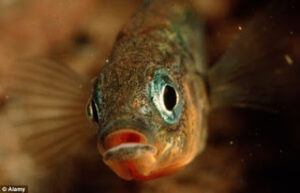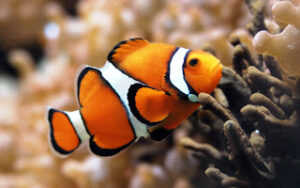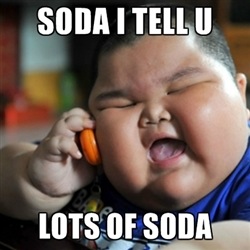Osmosis “is a process by which molecules of a solvent tend to pass through a semi-permeable membrane from a less concentrated solution into a more concentrated one”. It is distinct from diffusion, which is movement from a region of a high concentration to regions with a lower concentration.
What has this got to do with survival, self-defence or any of the other topics this blog has been known to cover? Keep reading and all will become clear.
Suppose you have an orange. You peel the orange and drop it into a vase of water. What happens? After a while the orange begins to swell up as it absorbs water. This is osmosis. The interior of the orange is relatively concentrated with lots of sugars and other molecules. Proportionally its interior is rather low in water compared to the liquid it is floating in. The orange skin is a semi-permeable membrane in that it will let water across but not the larger molecules.
Suppose we take a big bag of salt or sugar and empty it into the water in the vase. If we add enough we may see the orange begin to shrivel. The solutes in the solution surrounding the orange are more concentrated than the orange’s interior so water is being drawn out.
This is a very important mechanism in nature and biology. To give you another example. A freshwater fish is more concentrated than the water it swims in. Its body is therefore constantly absorbing water and the freshwater fish must constantly pee to maintain an equilibrium. The sea fish, however, is surrounded by fluid that is saltier than its body fluids. Water is constantly being drawn from the sea fish and it must constantly drink to avoid “dehydration”.


Some of you may have realized that the concentration of the fluids in the glass could be adjusted so that it matched that inside the orange. There would be no net water gain or loss. Such a condition is called “isotonic”. If an environment is more concentrated than another it is termed “hypertonic” and its less concentrated compliment “hypotonic”.
Isotonic is a word you will have encountered. Many sports drinks are described as isotonic. Very often the marketing of these involves misrepresented facts and sometimes outright “snake oil”.
Sports drinks fall into two categories. The first are “power drinks”, which are effectively liquid food. They are intended to replace energy and salts (aka electrolytes) consumed during heavy exercise. They contain lots of carbohydrate, usually in the form of sugars. There will also be a smidgen of salts and other stuff. Because they contain so many solutes power drinks tend to be hypertonic.
The second category of sports drink are designed to rehydrate the body and replace salts lost from sweating. Some of these drinks are hypotonic. Many promote the fact that they are isotonic. The blurb often says something like “by being in balance with your bodily fluids drink XXX rehydrates you better than plain old water”.
Sound logical? Think back to our orange in a glass. Imagine the orange is the lumen of your gut and the liquid it is floating in is the rest of your body. When the two were isotonic there was no net movement of water! If we wanted water to leave the orange the interior of the orange needed to be hypotonic.
So, are these drinks more efficient than water? There is a grain of truth here but it is often misrepresented. I will need to sketch a crude picture of how the body moves water out of the gut. In essence what the body does is create a very high, localized concentration gradient across the gut wall. It “pumps” sodium ions across the gut wall. This is an active process that requires energy. The energy comes from ATP, which is generally generated from sugars in the gut.. This osmotic gradient created pulls water across the gut wall. Moving small quantities of sodium allows the movement of large quantities of water. It’s a bit like moving a herd of donkeys with a single carrot.


So yes, a little bit of sugar and salt will aid water uptake. But that sugar and salt don’t need to be ingested with the water. Except under extreme circumstances the body generally has sufficient reserves and humanity has managed to rehydrate drinking just pure water for millennia. Carry some raisins or boiled sweets. The replenishment of water and supply of sugars can help offset fatigue.
Taste is another factor. Because they are sweet and/or acidic it is easier for some people to drink larger volumes of sports drink than they would of water, so actual intake of water is higher. There is an interesting experiment that you can try. Take two glasses of water and add just a dash of lemon juice to one. Try each.
It should be obvious that for rehydration you need to drink something that is hypotonic, although a pinch of salt and a little sugar won’t hurt. Drinks with high carbohydrate concentrations will be poor for rehydration, despite some manufacturer’s claims.
Many sports drinks may be isotonic when they are in the can, but is this still true when they reach the gut? Isotonic saline is 0.9%. Incidentally it is useful for soaking bloodstains out of laundry. You can make some isotonic saline by dissolving 4.5 gms of salt in half a litre of water. Taste it. You will find it is way too salty to make a pleasant sports drink. Whilst sports drinks do contain some salt they mainly use sugars to make them isotonic. A body that has been exercising wants sugars and sugars are needed for water uptake, so this seems logical. An isotonic glucose solution is 5% and isotonic sucrose solution is about 9.75%. 47.25 gms per half litre! Yes, that is a lot.
Another factor to consider is that sugars and other complex carbohydrates are mainly digested in the small intestine. They are broken down into monosaccharides such as glucose and fructose and most of them will be absorbed in the small intestine. The majority of water absorption does not take place until later in the large intestine. By the time your sports drink reaches here it will have lost most of its sugars and no longer be isotonic.
Let me return to the topic of power drinks. Most people do not need to ingest calories in this manner. That includes most athletes. You are being subjected to marketing to make you think you are not really trying, not a true athlete, unless you use drink XXX. Taking in lots of calories in liquid from is a bad idea. The lack of solids means that you never feel sated. This is why we have an obesity crisis. People are drinking vast quantities of sugar as soda or fruit juice and never feeling full. It seems likely that even isotonic drinks have way more sugar than they need. You may be drinking more calories than you exercise off!


If you do need a sports drink dilute some cordial and add just a pinch of salt. A friend of mine and myself discovered that “fruit squash” is much more refreshing if you make it very dilute.
I am a qualified biologist who used to try to teach medical students science and physiology. But as always, don’t take my word for it. Do some research of your own, but be wary of advice that is actually just a rehash of marketing. Start by reading the links below.